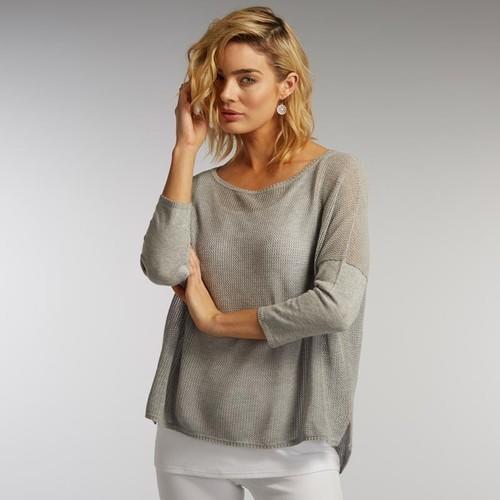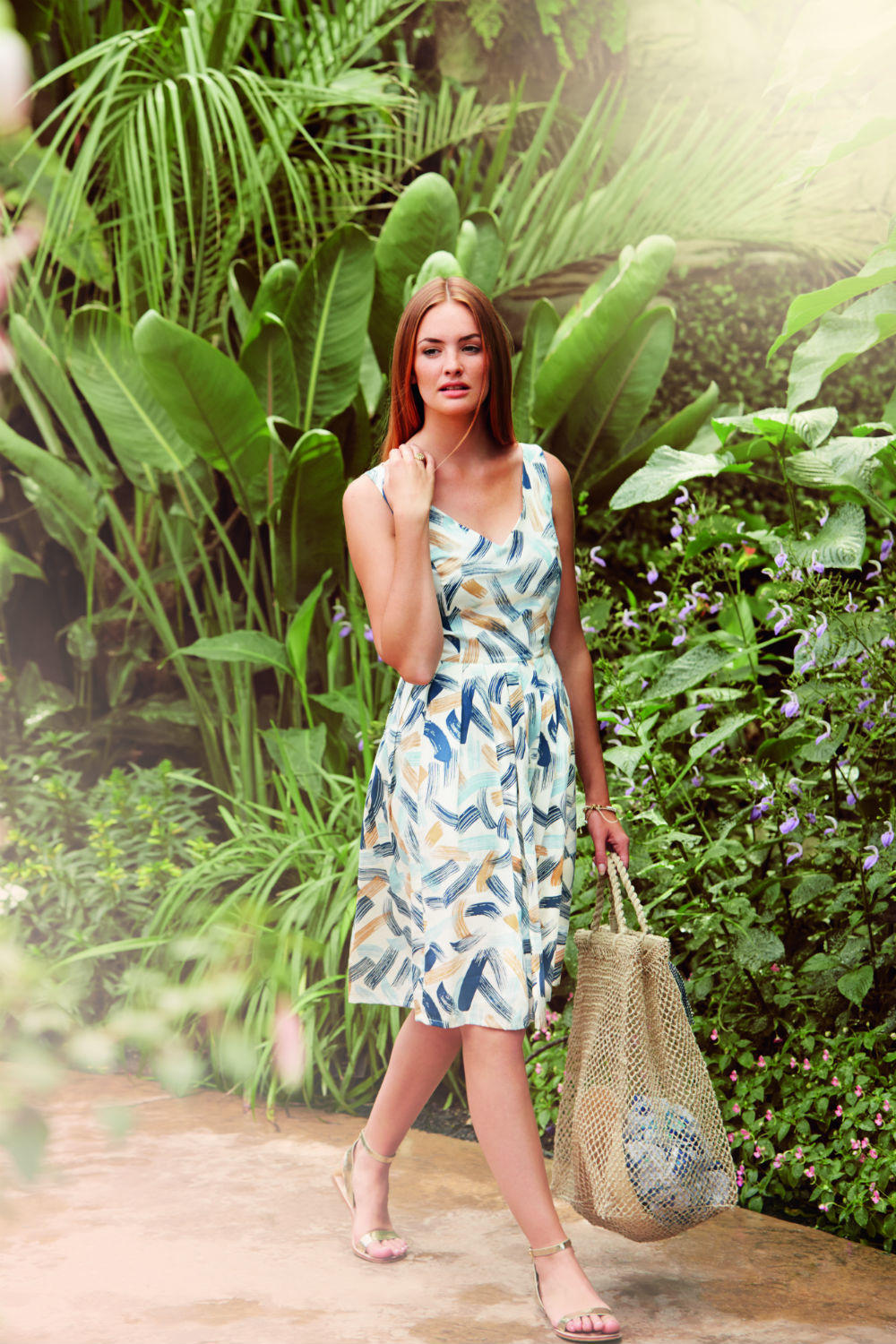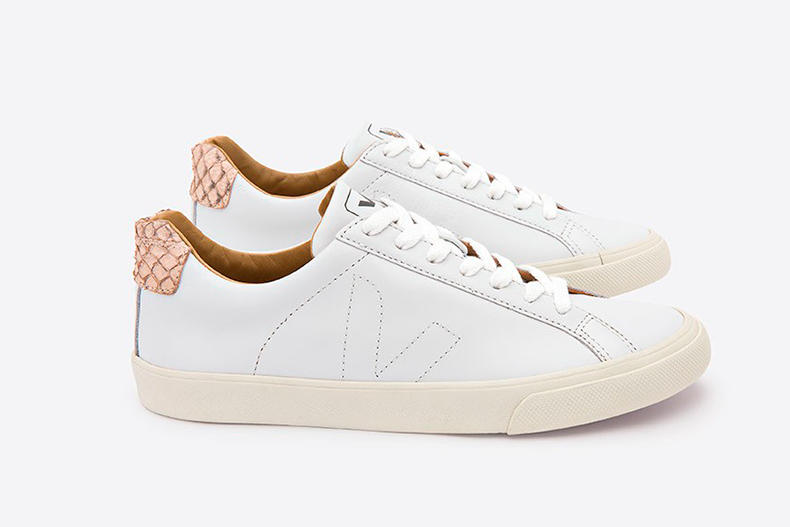Introduction
The fashion and design industry is taking a leading role in promoting eco-friendly and sustainable fashion in modern society. According to Gwilt, scientists have warned the business community that their activities may have a devastating impact on the environment. Issues such as climate change and global warming were not taken seriously in the recent past because the global society had not contemplated their real impact on our environment and the lives of people.
However, the increasing cases of destructive cyclones, prolonged droughts that are often followed by heavy rains and destructive floods, increase cases of desertification, and increasing level of coastline waters caused by the melting of polar ice indicate that global warming and climate change are real concerns whose consequences cannot be ignored.
Stakeholders in various sectors have learned that this issue of environmental conservation and sustainability cannot be ignored anymore. The fashion and design industry has been part of the past trends that led to massive destruction of the environment. The players in this industry created a trend where shoes, clothes, jewelry, and such related items do not stay in fashion for long. The more new designs are created, the more people shift from using one line of the products to the new one.
The impact was a massive amount of fashion wear-related wastes. A time has come when players in this industry must take lead in promoting eco-friendly and sustainable practices in the fashion industry. As they try to meet the ever-changing needs of customers in the market, one of the guiding principles that should inform their actions is the need to protect the environment. In this paper, the aim is to discuss the eco-friendly and sustainable practices in the fashion industry and forces that may affect the efforts of the stakeholders in this industry as they try to embrace the practice.
Research Goals
The concept of sustainability and eco-friendly practices are gaining popularity among scholars and in the business community. It is becoming clear that the natural environment has its limits and its ability to sustain human activities and human existence directly depends on our current practices. The more the environment becomes polluted, the more it is becoming sustainable. The only way of ensuring that the sustainability of the environment is assured is to embrace eco-friendly practices. The following are the specific goals that the researcher seeks to achieve by the end of this study.
- To determine the role played by design industry in promoting eco-friendly practices in fashion;
- To identify the historic, social, economic, and cultural contexts of eco-friendly and sustainable fashion;
- To determine the impact of eco-friendly practices on the art and fashion industry.
Discussion
The global community currently appreciates the fact that our environment can only be sustainable if there is a genuine effort to conserve it through eco-friendly practices. As Rinaldi and Testa state, when meeting the current needs, it is critical to ensure that the approach used does not jeopardize the ability of future generations to meet their own needs. The industrial revolution changed the world completely, especially when coal and oil became major sources of fuel in the industrial sector.
Little has changed in terms of finding alternative eco-friendly energy sources. However, the environment has been massively affected by the trend of constant pollution from various sectors of the economy. The fashion and design industry, just like many other industries, has realized that the current trend is unsustainable and an urgent solution must be found to address this problem. That is why designers all over the world are now coming up with designs, which can last long and pose minimal threat to the ecosystem.
Historical Context
Historically, eco-friendly and sustainable fashion has taken a great path to be what it is today. In the past, designers have tried to be very creative, but their central focus was to come up with products that meet the expectations of their trendy customers. The issue of environmental conservation was never considered important because the business community did not believe in it much. However, the trend started changing in the late 20th century when the impact of climate change and global warming started becoming clear.
Scientists explained that the massive emission of greenhouse gases, destruction of the vegetative cover, and constant environmental pollution by various contaminants and non-biodegradable substances were the leading causes of climate change. In the 21st century, the stakeholders in various sectors of the economy in the United States, and many other countries around the world, are now trying to find a solution to the problem of environmental pollution. The government is enacting laws to regulate emissions and effluents from the companies. Designers on the other hand are now embracing eco-friendly practices as a way of enhancing sustainability.
Social Context
The social forces have also played a role in promoting eco-friendly and sustainable design practices in design. The society is becoming conscious of the dangers of environmental pollution and the importance of engaging in eco-friendly practices. Gwilt says that eco-friendly designs in the fashion industry are becoming a popular trend in most of the developed economies around the world. This is so because the majority of the middle class have a college education.
They understand the need to conserve the environment by engaging in sustainable practices. Their growing support for eco-friendly shoes, clothes, bags, houses, among others is creating a new wave that is defining the trend in the design industry. Designers are now keen on coming up with eco-friendly products because of the social forces in the current society. Anyone wearing an eco-friendly shoe or dress is considered trendy. As such, the manufacturers have to shift their focus to what has become popular in the market.
The designers have to ensure that they use materials that customers prefer. This is specifically the case among teenagers and young adults. Figure 2 shows some of the dresses, which have become very popular among teenagers and young adults. The dresses are simple in design, but the fact that they are made of materials that do not pose any significant threat to the environment makes them very popular.
The problem with this market segment is that once they shift from one design to another, they completely avoid the other designs considered old fashion. It means that companies must now find ways of producing cloths, which are eco-friendly because it is the current trend. It is a massive force that has played a significant role in promoting eco-friendly and sustainable practices in the design industry within the country and abroad.
Economic Context
The economic forces have driven companies to shift their production strategies and practices in line with emerging trends. According to Gwilt, in the real estate industry, eco-friendly house designs are in great demand in North America, Europe, and parts of Asia-Pacific. Customers are willing to pay high prices for designs that can ensure that houses are developed in a way that enables them to integrate with the natural environment. The economic benefits of designing these eco-friendly houses are good motivation for the designers to embrace the new practice. In the apparel industry, eco-friendly shoes, clothes, and bags are fetching higher prices than the older designs made of non-biodegradable materials.
Other than the growing demand for eco-friendly products in the modern market, there is also the issue of sustainability. There are three pillars of sustainability, which are the planet, people, and profits. A firm can’t achieve success if any of these pillars is not sustainable. A company may have impressive profits and satisfied customers, but if the environment within which it is operating is chocking with pollutants, then at one point its operations may slowly stop. To stop such an eventuality, companies are keen on protecting their environment. It is the only way of securing their future operations irrespective of the industry where they operate.
Cultural Context
The cultural forces are also playing a critical role in promoting eco-friendly and sustainable practices in the fashion industry. A new culture is emerging that is very sensitive towards environmental conservation. Corporate social responsibility is currently associated with practices that conserve the environment. The culture of giving back to the environment is pushing stakeholders in the fashion industry to be conscious about the materials used in their designs.
Having long-lasting shoes or dresses is not only meant to benefit customers financially but also to conserve the environment. The longer the shoes last, the lesser the amount of waste that is created. This is a new cultural practice that companies are forced to embrace. In the past, their focus was to have products that do not last long in fashion as a way of increasing their sales and profitability. However, companies are now finding alternative ways of boosting their sales and profitability without exposing the environment to an uncontrollable amount of waste.
The practice is gaining massive popularity in various industries as firms try to promote their image in the market. It is important to look at some of the design-related industries where the practice is currently common. The following are some of the sectors that have taken leading roles in promoting eco-friendly and sustainable practices.
Clothing Industry
The clothing industry is playing a critical role in ensuring its practices do not hurt the ecosystem. Tai says “eco-friendly clothing has come a long way from those foggy hippie days filled with crunchy, hemp sandals and patchouli-smelling maxis.” Designers are now coming up with clothes to stand the test of time. One of the criticisms that have always been leveled against the fashion industry by environmental conservationists is that most of the fashionable trends do not last in the market.
Fashion designers are keen on promoting sales and the only way is to introduce new products in the market at regular intervals. Fashion enthusiasts are often keen on changing from one form of clothing to another as they try to remain trendy. The problem with such practices is that clothes, which are still new, find their way into dumpsites. Some of these fashion enthusiasts believe that they cannot wear cloth that is out of fashion. It means that the moment a design they are currently using is replaced by a new design, then they have to replace them immediately. To deal with this criticism, designers are now coming up with new designs that can last longer. This is meant to ensure that consumers use these products for a longer period to reduce the amount of waste arising from the industry.
The clothing industry has also faced criticism from environmental experts about the use of non-biodegradable materials. Some of these materials cannot be easily recycled when they have been used, making them a serious threat to the environment. Just like plastic waste, these non-biodegradable materials can only be destroyed by burning. However, they release greenhouse gases into the atmosphere during such processes. It has become necessary for the designers to find materials that do not pose any significant threat to the environment. According to Gwilt, efforts have been put in place to find eco-friendly materials for cloths.
Figures 1 and 2 show some of the modern fashion dresses made of eco-friendly materials. The materials can last long while in use, but when disposed of, they pose no significant threat to the environment. This new trend is meant to enhance sustainability in this industry of fashion and design. The designers can now come up with new designs knowing that the materials used cannot pose a threat to the environment. Some of these eco-friendly materials can be recycled to produce garments, which can be used for various purposes.
According to Rinaldi and Testa, when the concept of eco-friendly fashion emerged, it was positively received by the upper-class members who understand the real impact of climate change on the sustainability of the environment.
At first, it was expensive to come up with eco-friendly designs, as the concept was still new. However, this is changing as the stakeholders find ways of mechanizing the entire process of developing eco-friendly cloths. As Dunst says, “many people are under the impression that only the upper class can afford eco-friendly fashion.” This wrong perception has created a situation where the lower middle class and the poor give less priority to the concept of eco-friendly clothing. They know such cloths exist, but they associate them with the rich. As such, they give little priority to the possibility of owning such cloths.
Such perceptions should be eliminated through awareness creation. Society needs to be empowered so that everyone can understand that eco-friendly fashion is affordable and is the future of the clothing industry as the environment becomes increasingly delicate. Figure 2 shows the eco-friendly cloths, which are very affordable.
Clothing companies have realized that the ground is shifting and the market is now demanding eco-friendly products. As Claire says, “mega brands now recognize how important sustainable fashion is to their consumers.” These companies have realized that embracing eco-friendly practices not only gives that a positive corporate image but it also helps them in enhancing their sustainability in the market. Companies such as Victoria Secrete have come up with eco-friendly products as a sign of their commitment towards environmental conservation. Figure 3 below shows a trendy dress and a bag made of sustainable materials. It is a sign that companies are responding positively to the need for them to embrace sustainable practices in their business activities.
Footwear Industry
The footwear industry is also playing a critical role in ensuring that fashion becomes sustainable. Sports shoes are increasingly becoming popular not only among professional athletes but also among the general public who are keen on keeping fit or among those who prefer wearing sports shoes regularly because of comfort. However, some of these shoes are made of non-biodegradable materials. Designers are trying to come up with shoes made of environmentally friendly materials.
Figure 4 below shows one of the new show designs made of environmentally friendly designs. It is a sign of the commitment of these companies towards coming up with products, which can be used without worrying about their impact on the environment. Shoe designers are also appreciating the relevance of developing shoes that can last for long, other than the material is eco-friendly. According to Rinaldi and Testa, rubber shoes remain very popular in both developed and developing countries.
However, manufacturers have to find a way of ensuring that the materials used are safe for the environment once the product is finally disposed of. Gwilt says that the practice of exporting used shoes as second-hand products to the developing economies is still popular in developed countries. The practice makes it possible for the local society in the United States and other developed countries to have less to worry about when it comes to disposing of the used shoes. However, the practice of handing over the problem to the developing countries is not sustainable. A proper solution is necessary for terms of the materials used.
Other Fashion Industries
Eco-friendly practices are becoming common in many other disciplines of design. The real estate industry is one of the areas where stakeholders are trying to come up with structures that do not pose a significant threat to the environment. According to Gwilt, the real estate industry is booming in the United States. However, it is having serious negative consequences as forests have to be cleared to create space for houses.
Architects and engineers are now under great pressure to construct houses in a way that does not lead to ecological destruction. Architects are now trying the design housing units, which are eco-friendly. These new designs are meant to ensure that houses can be constructed without significantly destroying the vegetative cover. Figure 5 below shows one such eco-friendly house designs. The house is designed in a manner that fits perfectly well within the natural environment with the least possible destruction.
Massive excavation and clearing of the forest are avoided as much as possible. Instead, the house is made to fit and be part of the natural environment in a very unique way, as shown in figure 5. Such unique eco-friendly housing designs are becoming common in various parts of the world. The demand for such houses is also growing, especially among the rich who are keen on moving away from the highly populated and polluted cities around the world.
People want to stay close to nature where the air is not polluted with poisonous emissions from vehicles and heavy machines. The growing demand for such design is the proper motivation for the architects to engage in eco-friendly practices in this industry. The interior designers are also under pressure to bring nature to the living room but in a way, that poses no threat to human lives. They are forced to replace some of the synthetic materials, which have been in use for years in this industry, with new ones considered eco-friendly.
Conclusion
Global warming and climate change are realities with devastating consequences to the environment, just as scientists had warned. From North America to Europe, South America, Asia-Pacific, and Africa, the dangers of climate, change is becoming clearer than ever before. Africa is experiencing abnormal cases of drought and desertification. In the Americas and Asia, destructive cyclones are becoming common, leaving many people dead, many others injured, and property worth millions destroyed.
Flooding is becoming a major problem in various parts of the world. It has become critical for designers to play a role in protecting the environment. Fashion is changing from what it was in the past where beauty and functionality were the only guiding principle, to a modern society where environmental factors are also considered part of fashion. From clothing to real estate, designers are now keen on embracing eco-friendly practices to enhance sustainability.
Images





Works Cited
Claire, Marie. “The Stylish, Eco-Friendly And Ethical Fashion Brands You Need To Know About.” ASOS Eco. 2017. Web.
Dunst, Nichole. “The 16 Most Affordable Places to Buy Sustainable, Eco-Friendly, and Ethical Fashion.” Eco Cult. 2015. Web.
Gwilt, Alison. A Practical Guide to Sustainable Fashion. Fairchild Books, 2014.
Liebschner, Robyn. Some Eco Houses. RLR. 2011. Web.
Rinaldi, Francesca, and Salvo Testa. The Responsible Fashion Company: Integrating Ethics and Aesthetics in the Value Chain. McMillan, 2015.
Tai, Cordelia. “27 Eco-Fashion Brands We’re Obsessed With.” The Fashion Spot. 2017. Web.
The Good Trade. “35 Fair Trade & Ethical Clothing Brands Betting Against Fast Fashion.” The Good Trade. 2016. Web.